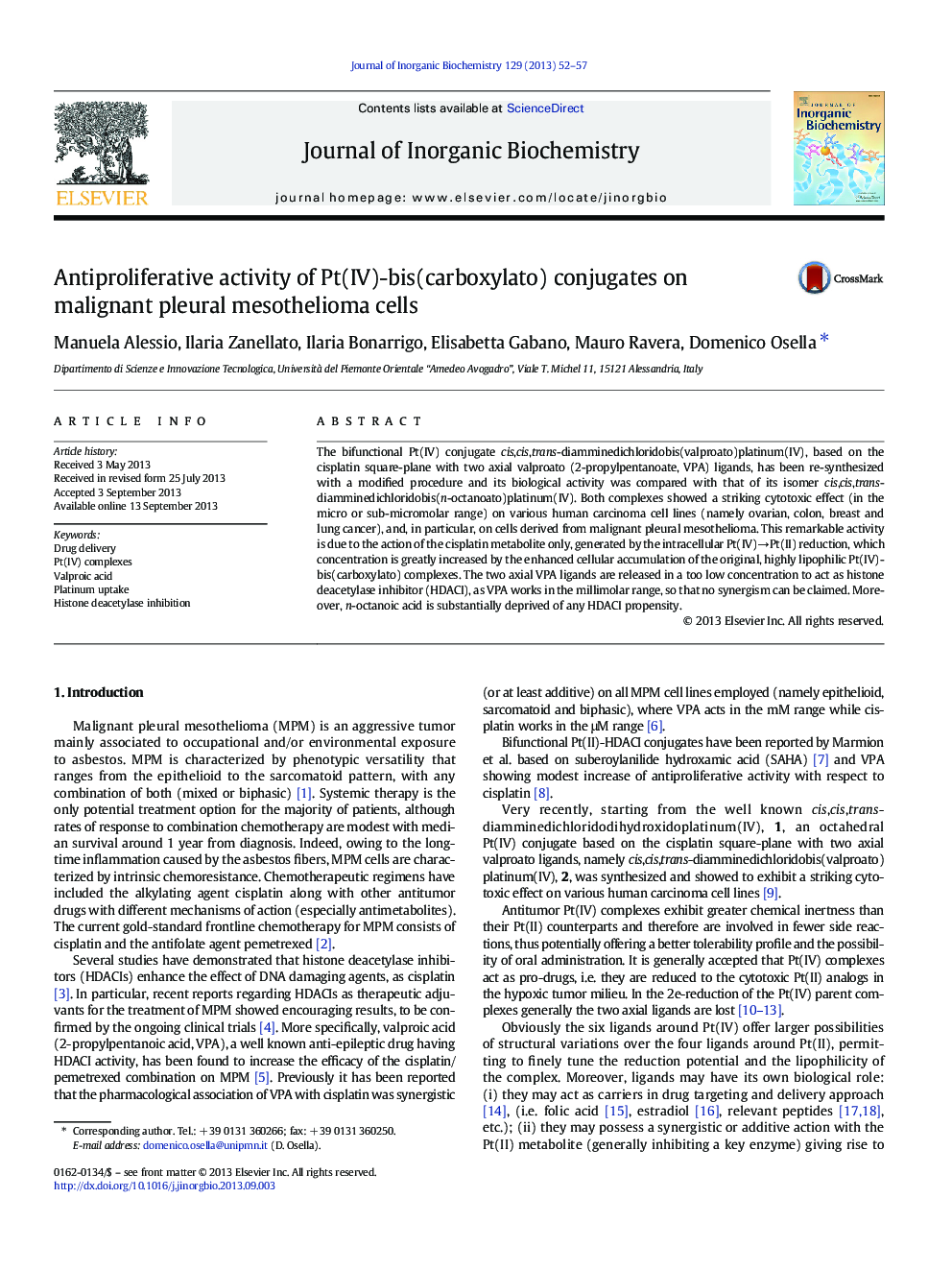| کد مقاله | کد نشریه | سال انتشار | مقاله انگلیسی | نسخه تمام متن |
|---|---|---|---|---|
| 1317491 | 1499458 | 2013 | 6 صفحه PDF | دانلود رایگان |

• Two Pt(IV) complexes, containing valproic or octanoic acid, are reported.
• Both complexes showed a striking cytotoxic effect on various human tumor cell lines.
• This effect is due to the high cellular accumulation of the lipophilic Pt complexes.
• No synergism with histone deacetylase inhibition can be claimed.
The bifunctional Pt(IV) conjugate cis,cis,trans-diamminedichloridobis(valproato)platinum(IV), based on the cisplatin square-plane with two axial valproato (2-propylpentanoate, VPA) ligands, has been re-synthesized with a modified procedure and its biological activity was compared with that of its isomer cis,cis,trans-diamminedichloridobis(n-octanoato)platinum(IV). Both complexes showed a striking cytotoxic effect (in the micro or sub-micromolar range) on various human carcinoma cell lines (namely ovarian, colon, breast and lung cancer), and, in particular, on cells derived from malignant pleural mesothelioma. This remarkable activity is due to the action of the cisplatin metabolite only, generated by the intracellular Pt(IV)→Pt(II) reduction, which concentration is greatly increased by the enhanced cellular accumulation of the original, highly lipophilic Pt(IV)-bis(carboxylato) complexes. The two axial VPA ligands are released in a too low concentration to act as histone deacetylase inhibitor (HDACI), as VPA works in the millimolar range, so that no synergism can be claimed. Moreover, n-octanoic acid is substantially deprived of any HDACI propensity.
Cis,cis,trans-[PtCl2(NH3)2(valproato)2] and its isomer cis,cis,trans-[PtCl2(NH3)2(octanoato)2] showed a striking cytotoxicity on various tumor cell lines due to an enhanced cellular accumulation. Valproates are released by the first complex in a too low concentration to inhibit histone deacetylase while octanoates lack such an activity, so that no synergism can be claimed.Figure optionsDownload as PowerPoint slide
Journal: Journal of Inorganic Biochemistry - Volume 129, December 2013, Pages 52–57